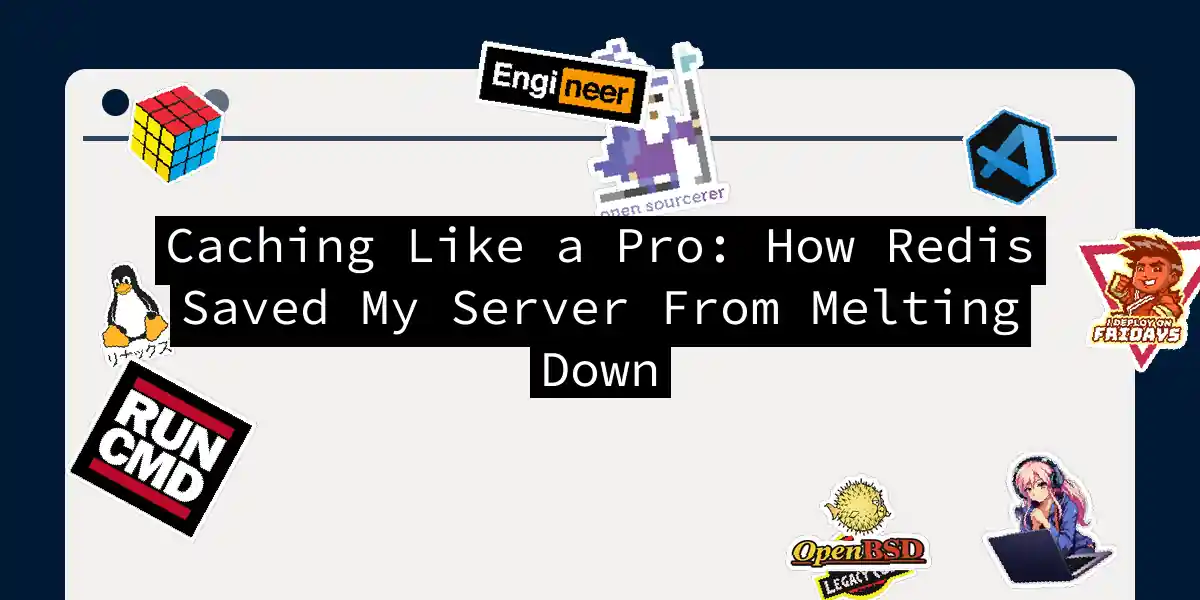Picture this: your server application is working harder than a college student during finals week. Database queries are piling up like dirty laundry, response times are slower than a sloth on melatonin, and your monitoring dashboard looks like a Christmas tree gone wrong. Enter Redis - the caffeine shot your system never knew it needed. Let me show you how to transform your application from “buffering…” to “boom!” with some Redis magic.
Why Your Database Needs a Personal Assistant
Modern applications demand faster responses than a politician avoiding questions. While traditional databases are great for storage, they handle repeated requests like I handle Monday mornings - with visible reluctance. That’s where Redis shines as:
- The Flash of data storage (sub-millisecond response times)
- Memory hoarder extraordinaire (in-memory data storage)
- Multitasking champion (supports strings, hashes, lists, sets, streams… and probably your grocery list)
Java Implementation: From Zero to Cache Hero
Let’s get our hands dirty with a Spring Boot implementation. First, add the caffeine dependency (no, not the actual drink - though I recommend having some):
<dependency>
<groupId>org.springframework.boot</groupId>
<artifactId>spring-boot-starter-data-redis</artifactId>
</dependency>
Now configure your application.yml:
spring:
redis:
host: localhost
port: 6379
password: your-mom-said-no-to-plaintext-passwords
Create a cacheable entity that even your grandma would understand:
public class Office {
@Id
private String id;
private String name;
private String coffeeMachineStatus; // Critical business data
// Getters and setters (the necessary evil)
}
Service layer with cache annotations:
@Service
public class OfficeService {
@Cacheable(value = "offices", key = "#id")
public Office getOfficeById(String id) {
// Simulate database call
return database.findOffice(id);
}
@CachePut(value = "offices", key = "#office.id")
public Office updateOffice(Office office) {
return database.save(office);
}
}
Memory Optimization: Because RAM Isn’t Free
Redis handles memory like I handle my closet - we both need regular cleanups. Pro tips:
Choose your eviction policy like choosing a Netflix show:
allkeys-lru(default) - Least Recently Usedvolatile-ttl- Time To Livenoeviction- For masochists
Data structure selection matters more than your Tinder bio:
Data Type Best For Memory Savings Hashes Small objects Up to 90% ZSETs Leaderboards Worth the complexity Strings Simple values Basic but reliable Memory command cheat sheet:
redis-cli info memory # Show memory stats
redis-cli --memkeys # Find memory hogs
redis-cli --bigkeys # Identify large keys
Advanced Jedi Caching Tricks
Time-To-Live (TTL) Management
@Cacheable(value = "coffee-status", key = "#machineId", unless = "#result.contains('decaf')")
public String getCoffeeStatus(String machineId) {
return checkMachine(machineId);
}
// Custom TTL service for those extra-picky endpoints
public class CacheTTLService {
@CachePut(value = "dynamic-ttl-cache", key = "#key")
public String cacheWithCustomTTL(String key, String value) {
return value;
}
@CacheEvict(value = "dynamic-ttl-cache", key = "#key")
public void removeFromCache(String key) {
// Bye Felicia
}
}
Cache Invalidation Strategies
Because eventually, all caches must die:
When the Cache Hits Back: Common Pitfalls
- Cache Stampede Prevention:
- Use probabilistic early expiration (add random jitter to TTLs)
- Implement “lock” keys for expensive computations
- Hot Key Nuclear Protocol:
// Distributed lock example
public String getNuclearCodes(String countryCode) {
String lockKey = "lock:" + countryCode;
if (redis.opsForValue().setIfAbsent(lockKey, "locked", 30, TimeUnit.SECONDS)) {
try {
return computeNuclearCodes(countryCode);
} finally {
redis.delete(lockKey);
}
} else {
throw new TryAgainLaterException("Someone's already pressing the button");
}
}
Conclusion: Cache Money, Cache Problems
Implementing Redis caching is like adopting a very fast, slightly temperamental pet. It requires feeding (memory management), training (proper configuration), and the occasional trip to the vet (monitoring). But when done right, you’ll achieve:
- Response times faster than your ex moving on
- Database load lighter than your productivity on Friday afternoon
- Scalability that would make Elon Musk jealous Remember: A well-cached application is like a good joke - timing is everything. Now go forth and cache responsibly! ☕️🔥
